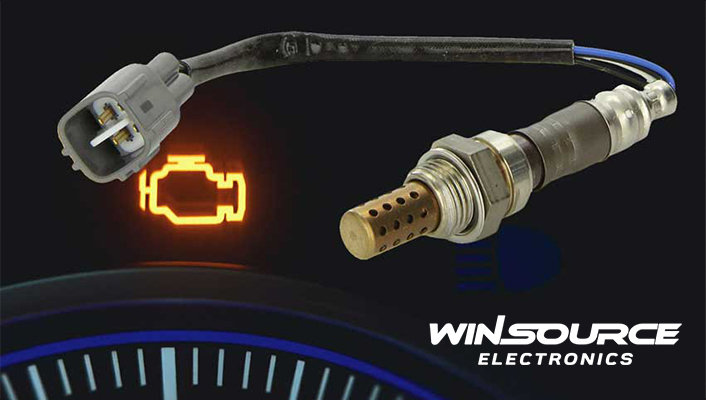
The oxygen sensor is vital in reducing exhaust pollution from engines equipped with three-way catalytic converters. It accurately measures the oxygen potential in the car’s exhaust system using ceramic components that are highly sensitive.
In practical applications, two types of oxygen sensors are commonly used: zirconia and titania. These sensors contribute significantly to ensuring efficient engine performance and minimizing harmful emissions. In this article, we will talk more about the Oxygen sensor.
Table of Contents
ToggleTypes Of Oxygen Sensors
Two types of oxygen sensors are commonly used in practical applications: zirconia and titania.
Zirconia Oxygen Sensor
The zirconia oxygen sensor primarily comprises a sheath and zirconia (ZrO2). There are two varieties available: heated and unheated.
The heated zirconia oxygen sensor consists of a zirconia tube with a heating rod at its center. The ceramic body of the zirconia tube is mounted in a threaded sleeve for easy installation.
Titanium Oxygen Sensor
On the other hand, a titania oxygen sensor (TiO2) measures the oxygen concentration based on changes in resistance rather than producing a voltage signal. When the oxygen concentration is low, a low-resistance oxide semiconductor is created to compensate for the loss of oxygen.
When oxygen is abundant, a high resistance condition occurs. This change in resistance can be used to determine the temperature of the cooling water by providing a reference voltage.
What Does an O2 Sensor Do?
An O2 or oxygen sensor is a crucial component in a vehicle’s engine management system. It measures the amount of unburned oxygen in the exhaust and communicates with the electronic control unit (ECU) to determine the ideal air-to-fuel ratio for optimal engine performance.
By monitoring the oxygen levels in the exhaust, the O2 sensor helps the fuel injection system make necessary adjustments to the air-to-fuel ratio. If the fuel mixture is too rich or too lean, the O2 sensor can inform the ECU to make appropriate adjustments to achieve the optimal air-to-fuel ratio.
Signs Of A Failing Oxygen Sensor
While the O2 sensor doesn’t need to be replaced as often as air or oil filters, it can wear out over time and cause the electronic control unit (ECU) to have difficulty maintaining the correct air-to-fuel ratio, resulting in poor engine performance.
Here are some common signs that your oxygen sensor may be failing:
● Reduced fuel efficiency: A failed oxygen sensor can cause an increase in the amount of fuel being pumped into the engine, significantly reducing fuel economy.
● Engine misfiring: A faulty O2 sensor can cause rough idling and engine misfiring. If you notice these symptoms along with a check engine light, it may be time to have the sensor checked.
● Poor engine performance: An improperly adjusted air/fuel mixture can cause problems such as slow acceleration or difficulty generating maximum power. A damaged O2 sensor may be the cause of these issues.
● Rotten egg smell: Excess fuel in the engine can cause a rotten egg smell due to the sulfur content. A faulty O2 sensor may be responsible for the excess fuel.
Conclusion
The oxygen sensor, also known as an O2 sensor, plays a crucial role in a car’s exhaust system. Working in collaboration with other components helps control emissions and ensure that fumes are properly removed from the engine. By communicating with the fuel injection system, the oxygen sensor helps to maintain the vehicle’s performance.
Therefore, understanding the importance of the oxygen sensor and its role in the overall functioning of the exhaust system is essential for car owners and enthusiasts alike. Interested in purchasing throttle position sensors in bulk? Contact WIN SOURCE today.

COMMENTS